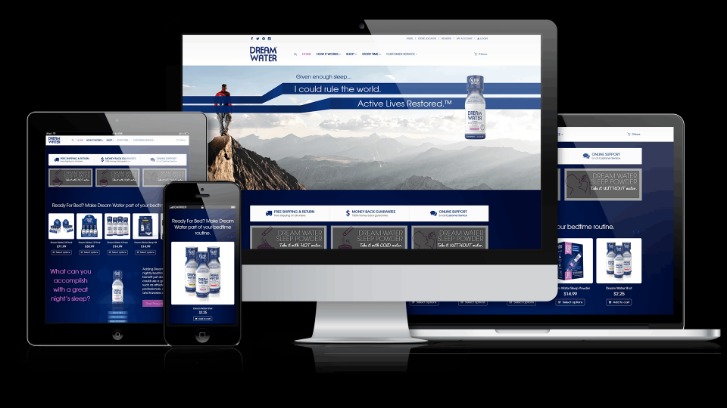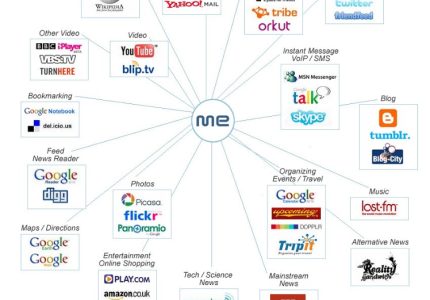Understanding Good Website Design Principles
Good website design is essential for creating an engaging and user-friendly online experience. It involves combining visual appeal with functionality to ensure visitors can easily find information and navigate through the site. Understanding key design principles helps developers and businesses craft websites that are both attractive and effective in achieving their goals.
Usability and User Experience (UX)
Good website design is essential for creating an engaging and effective online presence. It involves understanding core principles that enhance usability and provide a positive user experience (UX). Clear navigation, visually appealing layouts, and consistent color schemes help users find information easily and keep them engaged. Prioritizing simplicity and minimizing clutter allow visitors to focus on the content without distraction. Additionally, responsiveness ensures the website performs well on various devices and screen sizes, accommodating all users. Building intuitive interfaces and providing accessible features contribute to a seamless and inclusive experience. Ultimately, a well-designed website serves the needs of its users efficiently while conveying the brand’s message effectively.
Visual Hierarchy and Layout
Understanding good website design principles is essential for creating an engaging and effective online presence. Central to these principles are visual hierarchy and layout, which guide visitors through the content seamlessly. Visual hierarchy involves arranging elements so that the most important information stands out, helping users navigate and focus on key areas effortlessly. Effective use of size, color, contrast, and placement enhances this hierarchy, ensuring that what matters most catches the eye first. Layout, on the other hand, refers to the overall structure of the website, including the placement of menus, images, and text blocks. A clean and organized layout improves readability and makes the website more intuitive to use. Combining strong visual hierarchy with a thoughtful layout results in a user-friendly design that communicates clearly and encourages visitors to stay longer and engage more with the content.
Accessibility and Inclusivity
Good website design is essential for creating an engaging and user-friendly experience. It involves a thoughtful combination of visual aesthetics, functionality, and content organization to effectively communicate with visitors. Prioritizing clarity and simplicity helps users navigate the site easily and find the information they need without frustration.
Accessibility is a critical component of good website design, ensuring that all users, regardless of their physical abilities or limitations, can access and interact with the content. This includes using sufficient color contrast, providing alternative text for images, and designing keyboard-friendly navigation. Implementing accessibility standards broadens the reach of the website and demonstrates inclusivity.
Inclusivity in web design means creating a site that welcomes diverse audiences by considering different cultural backgrounds, languages, and abilities. This can be achieved through multilingual options, culturally sensitive content, and adaptable designs that cater to various devices and viewing conditions. Emphasizing inclusivity fosters a sense of community and respect, making websites more effective and equitable for everyone.
Design Elements and Aesthetics
Effective website design hinges on the careful consideration of design elements and aesthetics, which serve to create an engaging and user-friendly experience. These components, including layout, color schemes, typography, and imagery, work together to communicate the brand’s message and enhance usability. A well-balanced design not only captures visitors’ attention but also guides them seamlessly through the content, making the website both attractive and functional.
Color Scheme and Typography
Good website design relies heavily on the thoughtful use of design elements and aesthetics to create an engaging and user-friendly experience. Visual balance, consistency, and clarity guide the user’s eye and facilitate navigation, making it easier to find and interact with content. An appealing aesthetic often incorporates a harmonious layout, appealing imagery, and appropriate spacing to enhance readability and visual interest.
The color scheme plays a crucial role in setting the tone and mood of the website. Selecting complementary colors that reflect the brand identity helps evoke specific emotions and creates visual harmony. A well-chosen palette can improve readability, highlight key features, and guide users toward desired actions without overwhelming the senses.
Typography is another vital aspect of good website design. Choosing clear, legible fonts and appropriate sizes ensures content is easily readable across devices. Effective typography involves pairing fonts thoughtfully, establishing hierarchy through size and weight variations, and maintaining consistency throughout the site. Proper typographic choices enhance the overall aesthetics while reinforcing brand personality and improving user experience.
Imagery and Graphics
Effective website design relies heavily on carefully chosen design elements and aesthetics that create an engaging and user-friendly experience. Imagery and graphics play a crucial role in conveying the message, capturing attention, and enhancing visual appeal. These components must be thoughtfully integrated to maintain consistency and support the overall purpose of the website.
Key aspects to consider include:
- Color schemes that evoke the desired emotions and align with branding
- Typography that ensures readability and complements the site’s style
- Imagery that reinforces content and adds visual interest without overwhelming the user
- Graphics that enhance understanding, such as icons, illustrations, and infographics
- Consistent layout and visual hierarchy to guide user navigation effectively
- Balance between text and visuals to prevent clutter and promote clarity
Consistent Design Language
Effective website design hinges on the careful consideration of design elements and aesthetics, creating an appealing and user-friendly experience. A consistent design language ensures that all visual and functional components work harmoniously, reinforcing brand identity and reducing user confusion.
- Color Scheme: Use a cohesive color palette that aligns with your brand and evokes the appropriate emotions, ensuring readability and visual appeal.
- Typography: Select clear, legible fonts and maintain uniform font styles, sizes, and spacing throughout the site for consistency.
- Layout: Implement a logical and balanced layout that guides users naturally through content, emphasizing key elements appropriately.
- Imagery and Icons: Use high-quality images and icons that match the overall aesthetic, avoiding clutter and maintaining visual harmony.
- Navigation: Design intuitive navigational structures that are visually consistent, enabling users to find information effortlessly.
- Whitespace: Incorporate adequate whitespace to reduce clutter, improve focus, and enhance the overall aesthetic appeal.
- Consistency: Ensure that design elements such as buttons, forms, and headers follow a uniform style throughout the website to reinforce a cohesive visual identity.
By focusing on these design elements and maintaining a consistent visual language, a website can achieve a professional appearance and foster trust, ultimately enhancing user engagement and satisfaction.
Navigation and Structure
Effective navigation and structure are essential elements of good website design, guiding visitors seamlessly through content and enhancing user experience. A well-organized website with clear menus and logical layout helps users find information quickly and intuitively. Proper structure not only improves usability but also aids in search engine optimization, making the site more accessible and engaging for all visitors.
Clear and Intuitive Navigation Menus
Effective navigation and clear structure are essential components of good website design, ensuring visitors can easily find the information they seek. Well-organized navigation menus guide users seamlessly through the site’s content, reducing frustration and increasing engagement. Intuitive menu labels and logical hierarchies help users understand where they are and where they can go next, creating a positive browsing experience. Consistent placement of navigation elements across pages and the use of dropdowns or expandable menus can further enhance usability. Ultimately, a well-designed navigation system not only improves user satisfaction but also supports the website’s goals by encouraging exploration and interaction.
Organized Content Hierarchy
Effective website design relies heavily on clear navigation and a well-organized content hierarchy to enhance user experience. A logical structure helps visitors find information quickly and intuitively, reducing frustration and increasing engagement. Clear menus, breadcrumb trails, and consistent layout contribute to seamless navigation, allowing users to move effortlessly through the site. Establishing a hierarchical content structure involves prioritizing information, using headings and subheadings to break content into manageable sections, and ensuring important content is easily accessible. This organized approach not only guides users smoothly through the website but also improves accessibility and search engine optimization, ultimately supporting the site’s overall effectiveness.
Search Functionality
Effective website design relies heavily on clear navigation and well-organized structure to enhance user experience. A logical hierarchy, intuitive menus, and consistent layout allow visitors to find information easily and feel confident exploring the site. Incorporating breadcrumb trails, clear labels, and categorized sections helps users understand their location within the website and navigate seamlessly between pages.
Robust search functionality is also essential for good website design, especially for content-rich sites. A prominently placed search bar, autocomplete suggestions, and filters enable users to quickly locate specific items or information without frustration. When combined with an organized structure, search features make the website more user-friendly, encouraging longer visits and improved engagement.
Performance and Responsiveness
Performance and responsiveness are crucial elements of good website design that significantly impact user experience. A website that loads quickly and responds seamlessly to user interactions keeps visitors engaged and encourages them to explore further. Ensuring optimal performance and responsiveness not only enhances the usability of a site but also boosts its credibility and effectiveness in achieving its goals.
Page Load Speed
Performance and responsiveness are crucial elements of good website design, significantly impacting user experience and engagement. A responsive website adapts seamlessly to different devices and screen sizes, ensuring consistent functionality and aesthetics across desktops, tablets, and smartphones. Fast page load speed is equally important, as users expect quick access to content; delays can lead to higher bounce rates and lower satisfaction. Optimizing images, minimizing code, and leveraging browser caching are essential strategies to enhance load times. Together, these factors create a smooth, efficient browsing experience that encourages visitors to stay longer and explore more, reflecting a well-crafted, user-centric website design.
Mobile-Friendly Design
Performance and responsiveness are essential components of good website design, ensuring that visitors have a seamless experience regardless of their device or network conditions. A fast-loading website retains users’ attention and reduces bounce rates, which can be achieved through optimized images, minimized code, and efficient server responses. Responsiveness refers to a website’s ability to adapt gracefully to various screen sizes and devices, providing a user-friendly interface on smartphones, tablets, and desktops. Mobile-friendly design is crucial in today’s digital landscape, as a significant portion of web traffic comes from mobile devices. It involves designing layouts that are easy to navigate, with touch-friendly elements, legible text, and optimized performance for mobile networks. Together, these elements enhance user satisfaction, improve search engine rankings, and contribute to the overall success of a website.
Cross-Browser Compatibility
Performance and responsiveness are crucial aspects of good website design, ensuring that sites load quickly and function smoothly across different devices. Optimizing images, leveraging caching strategies, and minimizing code can significantly enhance the user experience by reducing load times. Responsive design utilizing flexible layouts and media queries allows websites to adapt seamlessly to various screen sizes, providing consistent usability on desktops, tablets, and smartphones. Cross-browser compatibility is also essential, as it guarantees that a website performs reliably across all major browsers like Chrome, Firefox, Safari, and Edge. Testing websites regularly across multiple browsers helps identify and fix inconsistencies, ensuring a unified and professional appearance for all users.
Content Strategy and Quality
Effective website design relies heavily on a well-crafted content strategy and high-quality content. A strong content strategy ensures that the information presented aligns with the target audience’s needs and goals, guiding the overall structure and messaging of the site. Coupled with compelling and valuable content, it enhances user engagement, builds trust, and ultimately contributes to a successful online presence. Prioritizing content strategy and quality lays the foundation for a website that is both visually appealing and informative.
Engaging and Relevant Content
Creating a good website design hinges on developing a strong content strategy that focuses on delivering quality, engaging, and relevant content to the target audience. By understanding the needs and preferences of visitors, designers can craft content that captures attention and encourages deeper interaction with the site. High-quality content not only enhances credibility but also improves search engine rankings, making the website more discoverable. Engaging content should tell a compelling story, incorporate visuals, and invite users to participate or share, fostering a sense of connection. Relevance is essential; it ensures that every piece of content aligns with the audience’s interests and the website’s purpose, ultimately leading to increased user satisfaction and conversions. Balancing these elements within the overall design ensures a cohesive user experience that is both visually appealing and genuinely valuable to visitors.
Effective Call-to-Action (CTA)
A successful website design hinges on a well-crafted content strategy that delivers valuable and relevant information to the target audience. High-quality content not only attracts visitors but also encourages them to stay longer and engage with the site. Consistency in messaging, clarity, and originality are key components to establish credibility and foster trust. Additionally, integrating effective calls-to-action (CTAs) guides visitors toward desired actions, whether subscribing to a newsletter, making a purchase, or contacting support. Well-designed CTAs are concise, visually prominent, and compelling, creating a seamless user experience that drives conversions and enhances overall website performance.
Regular Content Updates
Effective website design goes beyond aesthetics, focusing heavily on content strategy and quality to engage visitors and improve user experience. Prioritizing well-planned content ensures that the site provides valuable, relevant information that meets the needs of its audience, fostering trust and encouraging repeat visits.
Consistently updating content is crucial to maintaining a dynamic and relevant website. Regular content updates help improve search engine rankings, demonstrate that the site is active and trustworthy, and provide visitors with fresh information that encourages them to return. A well-structured content strategy combined with fresh updates reflects professionalism and commitment to delivering value to users.
Technical Considerations
Technical considerations play a crucial role in creating a successful and functional website. They encompass the essential aspects of web development, including server configuration, coding standards, security measures, and performance optimization. Addressing these factors ensures that a website is reliable, secure, and provides a seamless user experience. Understanding the technical foundations is vital for designing websites that are both visually appealing and technically sound.
Clean and Optimized Code
Creating a good website design requires attention to technical considerations that ensure the site is both functional and user-friendly. Clean and optimized code is essential for enhancing website performance, reducing load times, and providing a seamless user experience. Well-structured HTML, CSS, and JavaScript help improve accessibility and maintainability, making it easier to update and scale the website in the future. Additionally, following best coding practices such as eliminating unnecessary code, minifying files, and adhering to coding standards contributes to a more efficient and responsive website. Prioritizing these technical aspects ensures that the website not only looks appealing but also performs reliably across different devices and browsers, ultimately leading to higher visitor satisfaction and engagement.
SEO Best Practices
In the realm of good website design, considering technical aspects and SEO best practices is essential for creating a site that is both user-friendly and easily discoverable by search engines. Ensuring fast load times through optimized images, clean code, and minimized scripts enhances user experience and reduces bounce rates. Additionally, implementing a responsive design guarantees that the website functions seamlessly across various devices and screen sizes.
From an SEO perspective, using clear and descriptive meta titles and meta descriptions helps search engines understand the content of each page. Proper heading structure with H1, H2, and H3 tags improves content hierarchy and accessibility. Incorporating relevant keywords naturally within content, along with internal linking strategies, boosts search engine rankings. Furthermore, ensuring the website has an XML sitemap and a robots.txt file facilitates better indexing and crawling by search engines.
Overall, combining strong technical foundations with SEO best practices results in a website that performs well technically, ranks higher in search results, and provides a positive experience for visitors.
Security Measures
When designing a good website, paying attention to both technical considerations and security measures is essential to ensure optimal performance and user trust. Technical considerations include selecting the right hosting solution, optimizing website speed through efficient coding, and ensuring compatibility across various browsers and devices. Implementing responsive design techniques enhances accessibility, while proper use of content management systems and scalable architectures supports future growth. On the security front, employing HTTPS ensures encrypted data transfer, while regular security updates and patches protect against vulnerabilities. Additionally, deploying firewalls, intrusion detection systems, and strong authentication protocols safeguard sensitive information. Conducting routine security audits and educating users about safe practices further contribute to a robust and secure online presence. Balancing these technical and security measures is key to creating a reliable, efficient, and trustworthy website.
Testing and Continuous Improvement

Testing and continuous improvement are essential components of creating a successful website. By regularly evaluating website performance, user experience, and functionality, designers can identify areas for enhancement and implement necessary updates. This iterative process ensures that a website remains engaging, user-friendly, and aligned with evolving goals and technological advancements.
User Feedback and Analytics
Effective website design involves ongoing testing and continuous improvement to ensure optimal user experience. Regular testing helps identify usability issues, broken links, and interface inconsistencies, allowing designers to address problems proactively. Incorporating user feedback is essential, as it provides direct insights into the needs and preferences of visitors, guiding meaningful enhancements. Additionally, analytics tools enable tracking of user behavior, such as page visit durations, click patterns, and conversion rates, which inform data-driven decisions. Together, testing, user feedback, and analytics form a cycle that supports iterative refinement, ensuring the website remains intuitive, engaging, and aligned with user expectations.
A/B Testing and Iteration
Testing and continuous improvement are essential components of good website design, ensuring that the site effectively meets user needs and achieves desired objectives. Regular testing allows designers to identify issues, assess user interactions, and gather valuable feedback to inform future enhancements. A/B testing plays a crucial role by comparing two versions of a webpage to determine which one performs better based on specific metrics, thereby enabling data-driven decisions. Iteration involves making incremental adjustments, analyzing results, and refining the design repeatedly to optimize user experience and overall functionality. Embracing this cycle of testing and improvement helps create a website that is both user-friendly and adaptable to evolving needs and technologies.
Design Updates and Maintenance
Effective website design involves a continuous cycle of testing and improvement to ensure optimal user experience and functionality. Regular testing identifies areas where the website may encounter issues, such as broken links, slow loading times, or compatibility problems across different devices and browsers. By gathering user feedback and analyzing site performance metrics, designers can make informed decisions to refine features and layout for better engagement.
Design updates are essential to keep the website fresh, relevant, and aligned with evolving user preferences and technological advances. Incorporating new design trends, updating content, and enhancing visual elements can maintain user interest and improve overall site effectiveness. Continuous improvement also involves A/B testing different versions of pages or features to determine what resonates best with visitors.
Maintenance plays a crucial role in sustaining a high-quality website. Routine updates ensure that software, plugins, and security measures remain current, protecting the site from vulnerabilities. Ongoing maintenance also includes cleaning up outdated content, optimizing for search engines, and ensuring smooth functionality, all of which contribute to a reliable and user-friendly website that supports long-term success.





